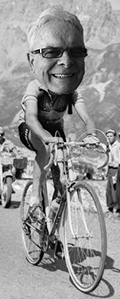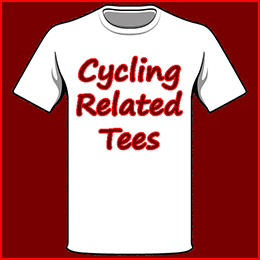Back on the Bike: The First Month
 Mon, August 28, 2006
Mon, August 28, 2006 
I have been back on my bike for a little over a month now after at least a 15 year break from cycling. I am amazed at how quickly I got back into it; I guess a body remembers. Not that I have been a couch potato since I last turned a pedal; up until three years ago I was running up to six miles a day and my resting heart rate was 36.
I had to quit running when my hip started hurting, but I continued walking. Now when you have a resting heart rate that is just barely ticking over, walking only brings it up to the pace that most others would experience getting up from the couch and walking to the refrigerator for a beer.
The other problem with walking (or running) in Charleston, South Carolina, is that it gets brutally hot here in the summer months. It is mostly in the upper 80s or 90s with very high humidity. You can just stand still and sweat let alone do anything strenuous like running or walking.
Riding a bike I find if I get out early before it gets too hot, once I get above 10 mph I’m creating a cooling breeze, and the faster I go the more airflow. Modern cycling helmets as well as looking cool actually have a cooling effect. Made from high density polyurethane; basically the same stuff that drink coolers are made from, so what better to wear on your head on a hot day. The built in slots channel air and add to the cooling effect.
Modern cycling clothing too is wonderful; made of a material designed to wick sweat away from the body so you feel cooler. Of course you are still sweating but as long as you keep hydrated by drinking plenty of water you are fine, and it’s easy to carry water on a bike. On my walking route I had to take in series of stops at hardware stores and city parks that had drinking fountains.
My first few days back on the bike my neck hurt. I imagine the human head weighs around ten pounds. (I’ve never actually weighed one.) So naturally leaning over in a racing position means you are holding your head up and it is going to make your neck muscles sore if you are not used to it.
So why is my bike set up in a racing position? It’s the way I have always ridden and my pride won’t allow me to adopt any other way. Of course I could have raised the handlebars level with the seat and used a shorter handlebar stem, but what kind of a dork would I look wearing all the latest racing gear and sitting on the bike looking like a monkey humping a football? I may not be fast yet, but damn it I’m going to at least look fast.
Anyway the sore neck muscles went away after the first week, and so did the puffing and panting on the slightest incline. My bike handling skills quickly returned and already it feels like I had never stopped riding.
I’m riding five days a week and up to thirty miles a day. I’m only averaging 15 mph; not fast but I feel it is respectable for the first month. I can’t ride at a leisurely pace; the slightest incline or a headwind and I feel I have to ride as hard as I can. I feel that burning sensation in my upper thighs and I remember what it was like when I was at the peak of fitness. On my rest days I still feel the ride in my legs from the day before and it feels good.
I can’t imagine taking Advil for sore muscles from cycling, like the TV commercial suggests; to me that dull ache in my leg muscles is the greatest feeling in the world. But then only an ex bike racer or athlete would think that way; I guess a body does remember.
The picture at the top is me on the new Cooper River Bridge, which happens to be the biggest hill in Charleston, SC. But that’s another story that I’ll write about next time.
 Dave Moulton | Comments Off |
Dave Moulton | Comments Off |  Bike Riding
Bike Riding 






















